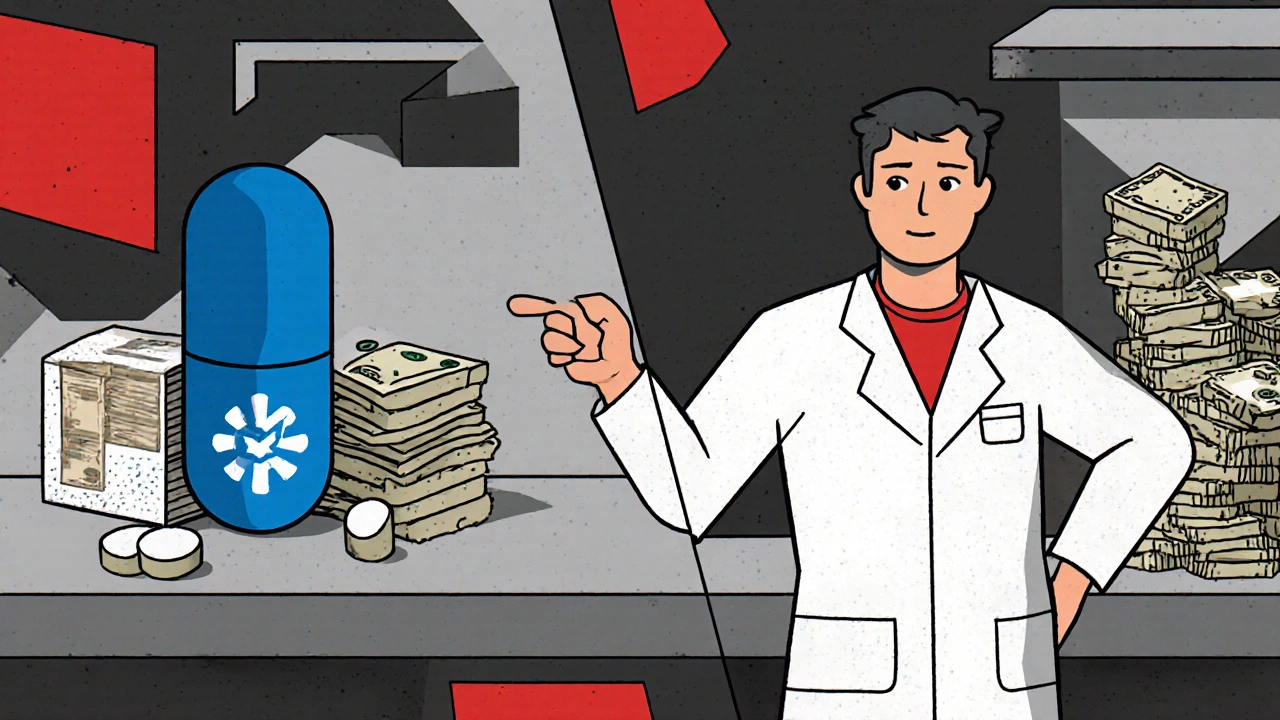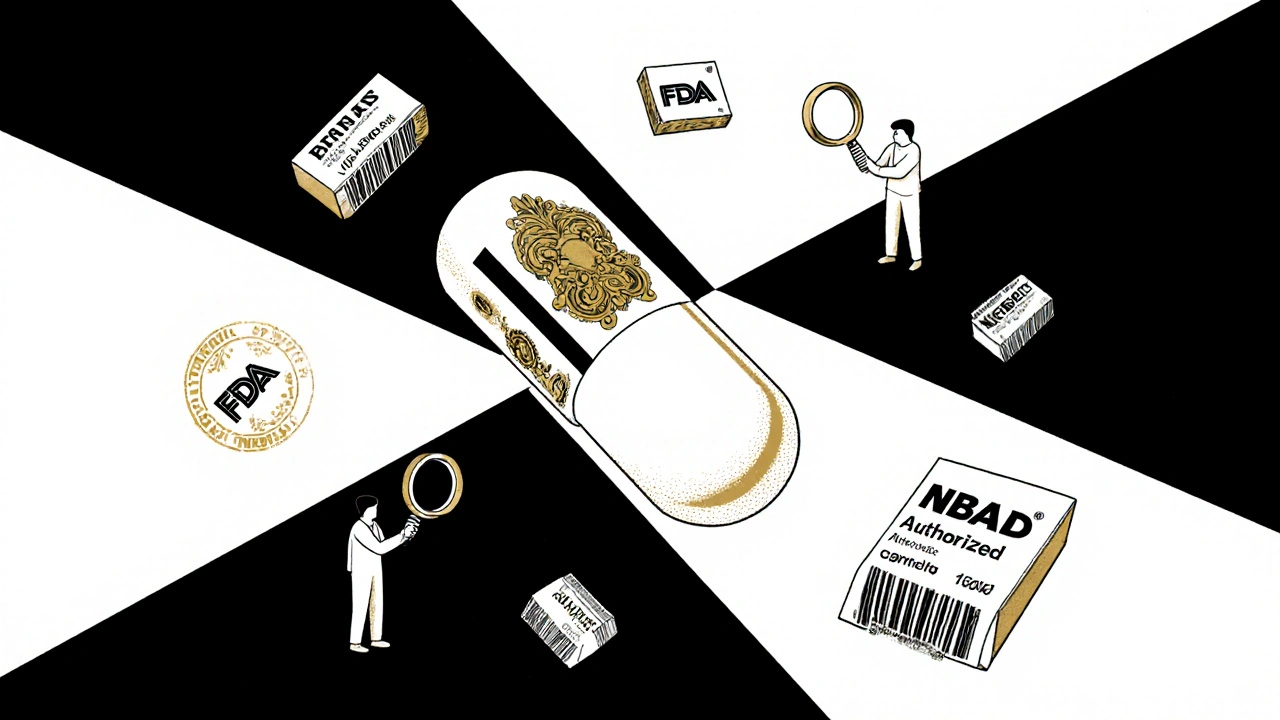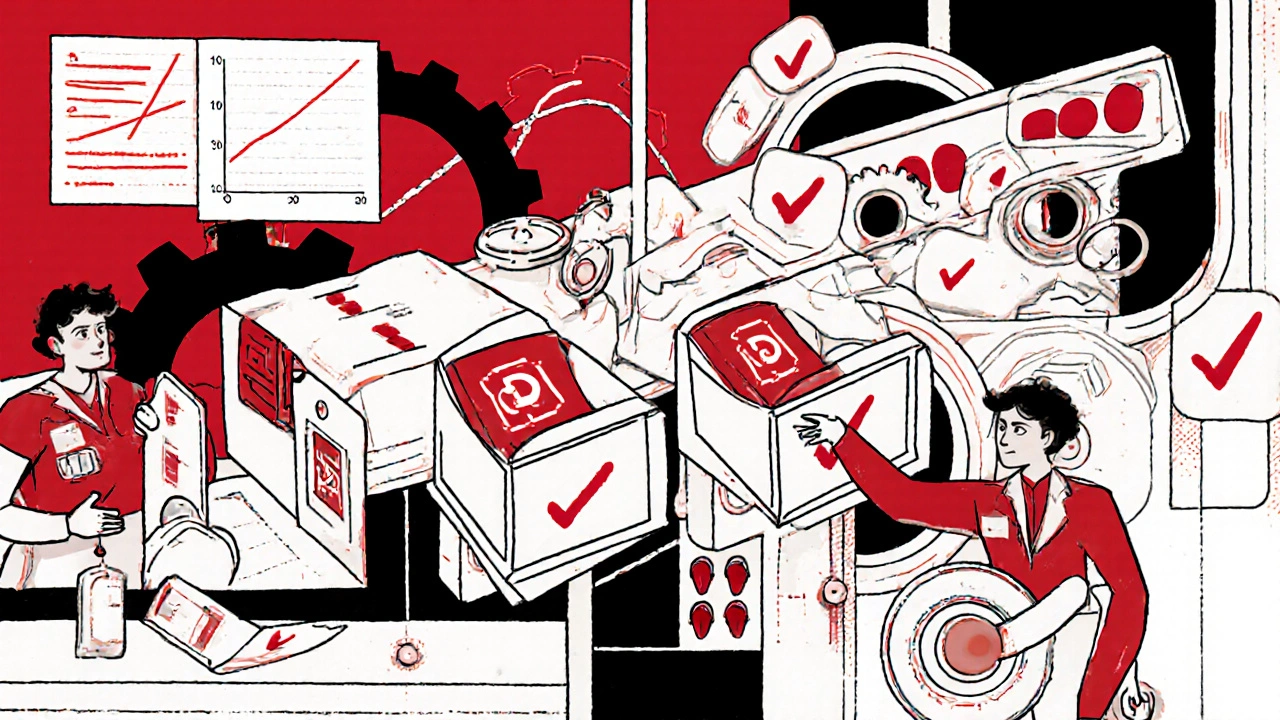SEARCH
Therapeutic Equivalence: Are Authorized Generics Really the Same as Brand Drugs?


When you fill a prescription for a brand-name drug and get a small, white pill with no logo instead of the familiar blue capsule you’ve been taking for years, it’s natural to wonder: is this really the same thing? Many patients worry that switching to a generic means getting a lesser version of their medicine. But what if the generic you’re handed isn’t just any generic-it’s an authorized generic? That’s not a trick. It’s the exact same pill, made by the same company, in the same factory, with the same ingredients-just without the brand name on the label.
What Exactly Is an Authorized Generic?
An authorized generic is not a copy. It’s not a knockoff. It’s the original brand drug, produced by the same manufacturer, under the same approval, and packaged without the brand name. The U.S. Food and Drug Administration (FDA) defines it plainly: "It is the exact same drug product as the branded product." The only difference? No fancy packaging. No marketing logo. Just the medicine you’ve been taking, sold at a lower price.
Unlike typical generics-which are made by other companies and must prove they work the same way through bioequivalence studies-authorized generics skip that step entirely. They’re approved under the original brand’s New Drug Application (NDA). That means they’re not listed in the FDA’s Orange Book, where most generics appear. Instead, they’re treated as the brand drug itself, just labeled differently.
This isn’t a loophole. It’s a legal pathway created by the Hatch-Waxman Act of 1984. That law gave brand companies a way to introduce generics without losing control of their product. And when they do, they’re required to tell the FDA. No surprises. No hidden changes.
Authorized Generics vs. Typical Generics: The Real Difference
Most people think all generics are the same. They’re not.
Typical generics must match the brand drug in active ingredient, strength, and dosage form. But they can-and often do-use different inactive ingredients. That means different fillers, dyes, binders, or coatings. For most people, this doesn’t matter. But for patients with allergies, sensitivities, or conditions like epilepsy or thyroid disease, even small changes in inactive ingredients can cause confusion or concern.
Authorized generics don’t have that issue. They use the exact same inactive ingredients as the brand. If your brand drug has a red dye, the authorized generic has it too. If the brand uses a specific coating to control release, so does the authorized version. There’s no guesswork. No formulation changes. It’s the same pill, same batch, same factory.
And yes, they still have to meet the same FDA manufacturing standards. Every batch of an authorized generic is held to the same quality control as the brand. The FDA inspects the same plants, checks the same records, and enforces the same rules.
Do Authorized Generics Work the Same as Brand Drugs?
Yes. And the data backs it up.
A 2018 study published in PMC tracked over 5,000 patients who switched from brand-name drugs to generics-including authorized generics. The results? No meaningful difference in hospital visits, emergency room trips, or medication discontinuation rates. Patients on authorized generics were just as likely to stick with their treatment as those on the brand. Even the slight uptick in emergency visits for authorized generics (0.25 per patient-year vs. 0.22 for typical generics) was too small to be clinically relevant.
The FDA has been clear for decades: if the active and inactive ingredients are identical, the therapeutic effect is identical. Dr. Janet Woodcock, former head of the FDA’s drug evaluation center, said it plainly: "Authorized generics provide the same therapeutic effect as the brand-name product."
Even experts who are cautious about generics acknowledge this. Dr. Philip Albrecht from the University of Maryland School of Pharmacy points out that while some worry about narrow therapeutic index drugs-like warfarin or levothyroxine-the FDA’s strict standards ensure batch-to-batch consistency. That applies to authorized generics just as much as to brands.
And here’s something most people don’t know: the FDA investigates side effects for authorized generics the same way they do for brand drugs. If a pattern emerges, they trace it back to the manufacturer-not the label.
Why Do Authorized Generics Cost Less Than Brands?
Because they don’t need to pay for marketing, advertising, or patent litigation. Brand companies spend billions promoting their drugs. Authorized generics don’t. They’re sold as plain products, often through the same distribution channels as typical generics. That’s why they’re usually cheaper than the brand-but sometimes more expensive than a typical generic.
Why the price difference? Because typical generics are made by multiple companies competing on price. Authorized generics are made by one company-the original brand manufacturer. So while they’re cheaper than the brand, they don’t always drop as low as the cheapest generic.
Still, savings are real. The average generic saves patients 80-85% off the brand price. Authorized generics often land in the 50-70% range. That’s still a big win for patients paying out of pocket or facing high copays.

Why Aren’t Authorized Generics Listed in the Orange Book?
The Orange Book is the FDA’s official list of approved generic drugs. But it only includes products approved under the Abbreviated New Drug Application (ANDA) process. Authorized generics are approved under the original brand’s NDA. So they’re not in there.
This creates confusion for pharmacists and patients. You might see two versions of the same drug in your pharmacy system: one labeled "Levothyroxine 50 mcg" and another labeled "Synthroid 50 mcg (authorized generic)." They’re the same. But your system treats them as different products.
That’s why pharmacists need to know the difference. If you’re switched to an authorized generic, your insurance might still charge you a brand copay if the system doesn’t recognize it as a generic. Always ask: "Is this an authorized generic?" If it is, you might be able to request a formulary exception or ask your provider to specify it on the prescription.
Who Should Consider Authorized Generics?
Anyone who’s had a bad experience switching to a typical generic. That includes:
- Patients on medications with narrow therapeutic indexes (like warfarin, lithium, or thyroid meds)
- People with allergies to dyes or fillers used in typical generics
- Those who noticed changes in side effects or effectiveness after switching
- Patients on birth control pills, where formulation consistency matters for hormone levels
It’s also a smart choice for people on long-term medications where consistency matters more than cost. If you’ve been on the same brand for years and your body is used to it, an authorized generic gives you the same stability-without the brand price tag.
What About Brand Generics? Are They the Same?
Don’t confuse authorized generics with "brand generics." Those are typical generics that have been given a proprietary name-like Errin or Jolivette for birth control pills. They’re still ANDA-approved. They can have different inactive ingredients. They’re not the same as the original brand.
Authorized generics have no brand name at all. They’re labeled with the generic name only. That’s the key.

How to Spot an Authorized Generic
Here’s how to tell if what you’re getting is an authorized generic:
- Ask your pharmacist: "Is this an authorized generic?" They can check the NDC code.
- Look at the packaging. It won’t have the brand logo, but it might say "Authorized Generic" or "Manufactured by [Brand Company Name]."
- Check the pill imprint. If it matches your brand pill exactly (same shape, color, imprint), it’s likely an authorized generic.
- Compare the National Drug Code (NDC). If it starts with the same number as your brand drug’s NDC, it’s the same manufacturer.
Some pharmacies even have a separate section for authorized generics. If you don’t see it, ask.
Is There Any Risk in Switching?
For most people, none. The FDA has reviewed over 12,000 generic products and found no evidence that authorized generics are less safe or effective than brands. In fact, because they’re identical, they’re the safest switch you can make.
The only risk comes from misinformation. If you think all generics are the same, you might be disappointed when a typical generic doesn’t work the same way for you. That’s not the generic’s fault-it’s the inactive ingredients. Authorized generics remove that variable entirely.
And if you’re worried about cost? Ask your doctor or pharmacist if your brand drug has an authorized generic version. Many do. And if your insurance won’t cover it at the generic tier, you can often get it for less by paying cash.
What’s the Future of Authorized Generics?
The market for authorized generics is growing. As more brand companies face generic competition, they’re using authorized generics to keep customers loyal-not because they’re better, but because they’re familiar. The FDA is pushing for more transparency, and new guidance from 2023 requires clearer labeling.
By 2028, experts predict authorized generics will make up 5-7% of all generic prescriptions-mostly for complex, high-risk medications where consistency matters most.
They’re not a cure-all. But for patients who’ve been burned by switching to a typical generic, they’re the closest thing to staying on the brand without paying the brand price.
Are authorized generics as safe as brand-name drugs?
Yes. Authorized generics are made by the same manufacturer, in the same facility, using the exact same ingredients and quality controls as the brand-name drug. The FDA holds them to the same standards. There is no difference in safety or effectiveness.
Why don’t authorized generics appear in the FDA’s Orange Book?
The Orange Book only lists drugs approved under the Abbreviated New Drug Application (ANDA) process. Authorized generics are approved under the original brand’s New Drug Application (NDA), so they’re not included. This doesn’t mean they’re less effective-it just means they’re treated as the brand product with different labeling.
Can I ask my pharmacist to give me an authorized generic instead of a typical generic?
Yes. You can request an authorized generic by name or by asking if your brand drug has one. Pharmacists can check the NDC code to confirm. If your insurance covers it at the generic tier, they’ll dispense it. If not, you can often pay cash and save money compared to the brand.
Do authorized generics have the same side effects as the brand?
Yes. Since they contain the exact same active and inactive ingredients, side effects are identical. If you experienced dizziness or nausea with the brand, you’ll likely feel the same with the authorized generic. That’s actually a benefit-it means no unexpected reactions from new fillers or dyes.
Are authorized generics cheaper than typical generics?
Not always. Authorized generics are usually cheaper than the brand, but sometimes more expensive than the lowest-priced typical generic. That’s because typical generics compete with multiple manufacturers, driving prices down. Authorized generics are sold by one company-the original brand-so they don’t always drop as low. Still, they often cost 50-70% less than the brand.